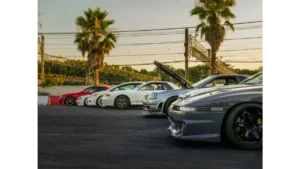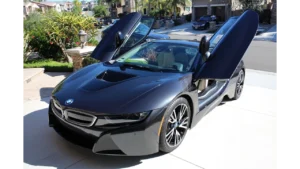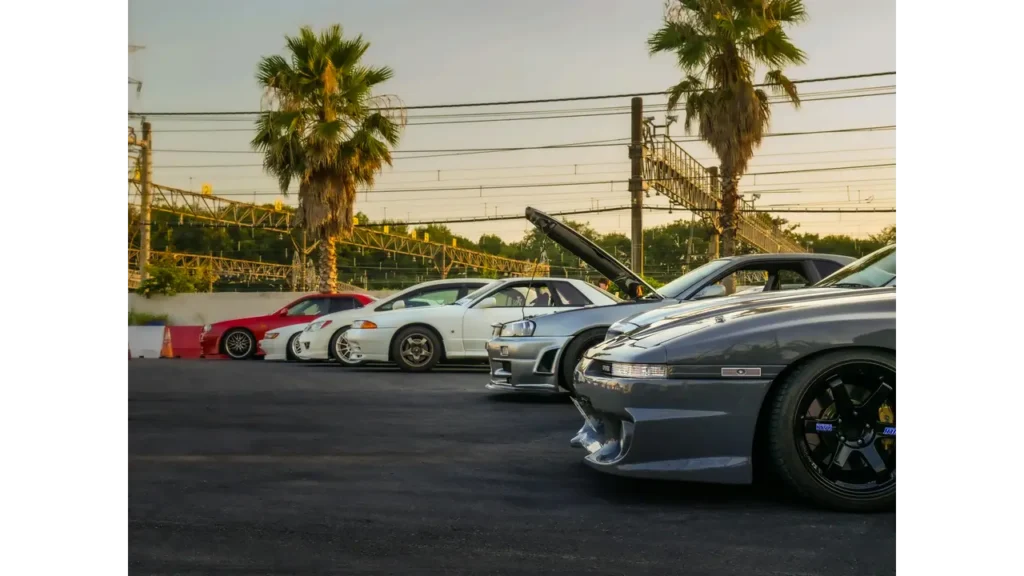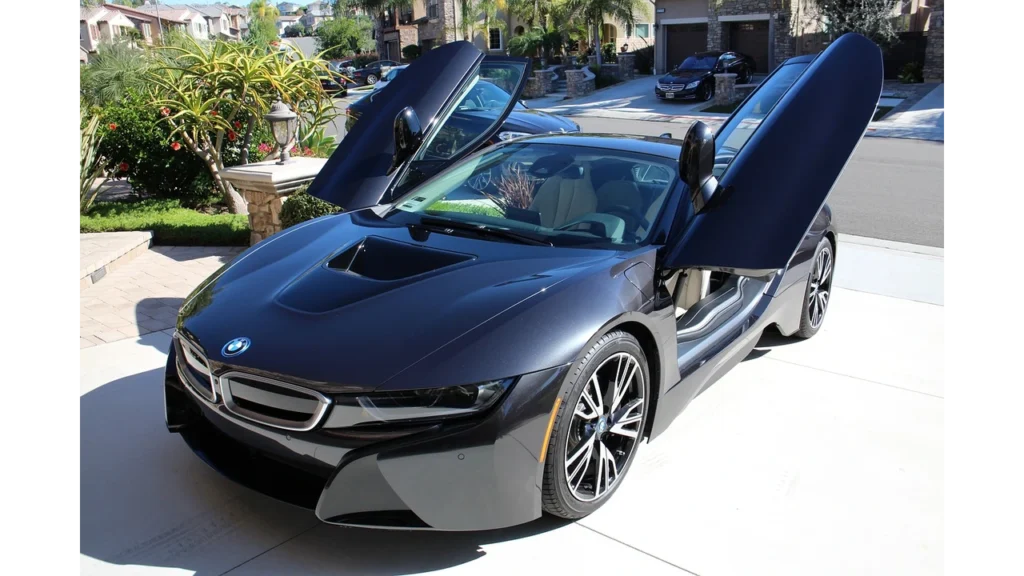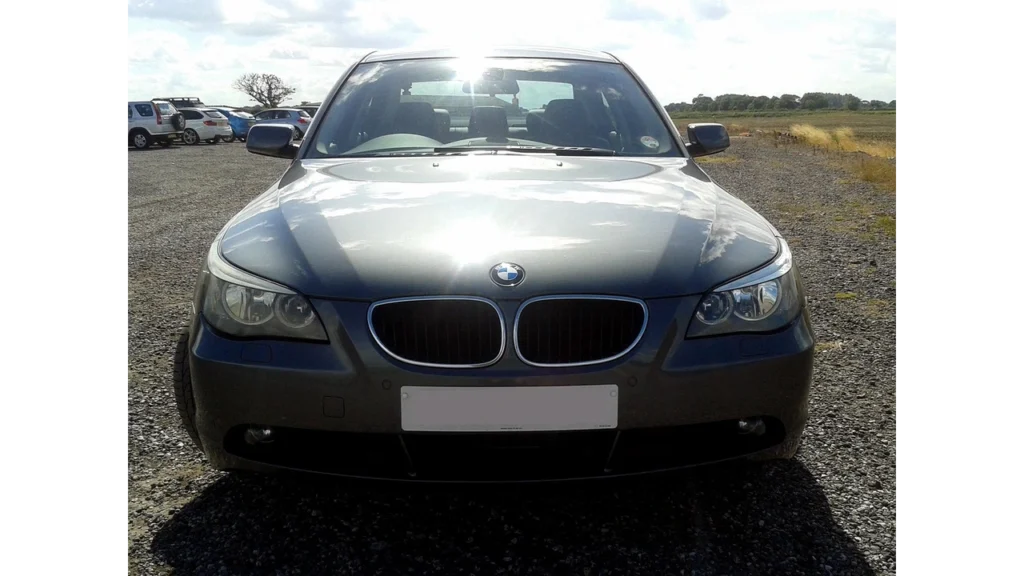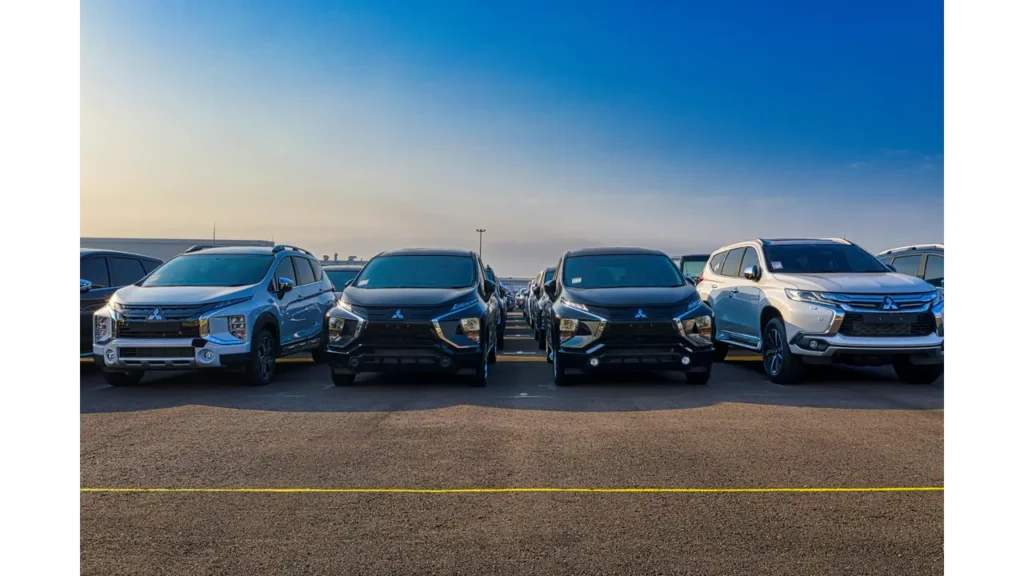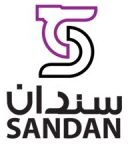Introduction
Car ownership in Oman follows a clear, rules-based pathway that links vehicle registration, technical inspection, and mandatory motor insurance under defined authorities. Royal Oman Police manages registration and renewal through the eTraffic system. Licensed inspection centers, including ROP lanes and approved private operators, verify roadworthiness before key events such as renewal or ownership transfer. Motor insurance sits under the Financial Services Authority, with third-party liability required for any vehicle on public roads and comprehensive cover widely selected for newer or financed cars. Customs rules shape how imported vehicles enter the system, especially when a car crosses from another GCC state and needs precise paperwork before plates are issued.
Buyers often face the same friction points. Renewal can be blocked by unpaid fines or missing inspection. Ownership transfer stalls when a vehicle fails inspection, insurance is not bound, or the digital authentication window expires. Imported cars raise separate questions around age limits, compliance with Omani standards, and whether documents match the chassis number and export certificates issued abroad. The good news is that the steps are predictable once the entities and their relationships are understood. This guide prioritizes fast answers first, then maps the system so buyers can plan a one-trip finish at integrated auto hubs and showrooms.
The following sections deliver a concise snapshot for high-intent queries, then a system overview that connects the agencies, platforms, and documents that govern car ownership in Oman.
Key Takeaways / TLDR
- Vehicle registration and renewal run on ROP eTraffic, with inspection and fine clearance required in common scenarios.
- Third-party liability insurance is mandatory; comprehensive is optional and often paired with agency repair or GCC travel riders.
- Ownership transfer typically follows a sequence: inspection pass, insurance binding, digital transfer with a short authentication window.
- Imported vehicles require the correct export documentation from the source market plus customs clearance before inspection and registration.
- Digital identity and valid resident IDs are central to eTraffic actions; mismatched names or expired IDs delay processing.
Table of Contents
Snapshot for Fast Answers (Entity Cards & Key Rules)
Registration renewal on eTraffic requires a valid national ID or resident card, cleared traffic fines, and completion of roadworthiness inspection where applicable. Private vehicles that reach an age threshold are routinely pulled into inspection at renewal, and commercial categories typically require inspection regardless of age. If any prerequisite fails, renewal remains pending until the issue is resolved in the system.
Ownership transfer is a two-party digital transaction triggered by the seller and authenticated by the buyer within a short time window. A successful transfer depends on a recent inspection pass, an active insurance policy that names the new owner from the handover moment, and clean records with no outstanding violations. If the authentication window lapses, the seller must reinitiate the process.
Insurance rules are straightforward. Third-party liability is compulsory for legal road use and covers damage to others. Comprehensive insurance is optional but adds own-damage protection, agency or market repair choices, off-road or flood extensions, and cross-border clauses such as GCC travel or an Orange Card where relevant. No-claim discounts typically apply after claim-free periods and can materially change pricing for repeat renewals.
Inspection focuses on safety-critical items. Brake balance, tire condition and age, lighting and signaling, leaks, windshield integrity, emissions, and structural checks drive pass or fail outcomes. A failed test usually comes with a rectification note and a re-inspection window. Completing minor fixes before the lane visit saves time and fees.
Importing a used car into Oman adds customs and conformity steps. Border officials verify identity, export documentation from the origin market, and compliance with Omani standards. After customs clearance, the vehicle moves to temporary cover if needed, then inspection, insurance binding, and first registration.
How Car Ownership Works in Oman (System Overview)
The system rests on distinct entities with well-defined roles. Royal Oman Police directs the vehicle registry, issues and renews Mulkiya cards, and manages fines and plate assignments. The eTraffic portal and counters act as the interface for renewals, transfers, replacements, and fine payments. Licensed inspection centers verify technical fitness and publish pass or fail results directly into the record so subsequent actions can proceed without manual paperwork.
The Financial Services Authority governs the insurance market. Insurers issue third-party or comprehensive policies aligned with unified wording and local regulations. An active policy tied to the correct chassis number and owner identity is a prerequisite for first registration and is typically updated at ownership transfer. When a vehicle changes hands, insurers either endorse the existing policy to the buyer when permitted or cancel and reinsure the asset in the new name.
Oman Customs controls import pathways. Where a car enters from another GCC country, officers review export documentation from the origin, check for restrictions, and confirm conformance with Omani standards. After duty and paperwork clearance, the vehicle becomes eligible for inspection and registration inside Oman.
Digital identity connects these actors. Valid ID credentials enable eTraffic actions, and data consistency across ID, insurance, and customs paperwork prevents mismatches. Presence requirements can apply at renewal, particularly for identity verification and physical inspection. If fines or violations exist on the plate or owner record, eTraffic blocks the next step until payment posts.
Service density matters to buyers. Integrated auto hubs and industrial parks concentrate showrooms, inspection lanes, workshops, and insurance desks in one district. This geography supports a same-day sequence: pre-inspection and fixes, insurance issuance, eTraffic transfer or renewal, and plate or card collection. When entities and documents align, car ownership tasks in Oman follow a predictable, low-friction flow.
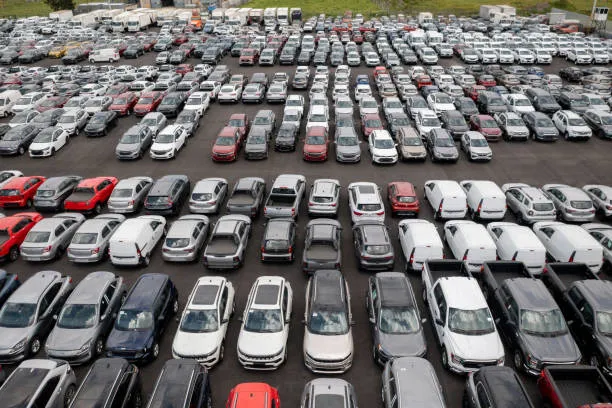
Registration Pathways by Scenario
New vehicle from a dealership follows a structured handover. The dealer issues the sales invoice and vehicle conformity documents, then coordinates plate reservation and Mulkiya issuance through eTraffic. Mandatory third-party liability insurance is bound in the purchaser’s name using the chassis number, often upgraded to comprehensive when agency repair is preferred. Required identity documents include an Oman ID or resident card, a valid driving licence, and, for companies, commercial registration and an authorized signatory letter. Fees scale by engine size and plate type. Common blockers include unpaid fines on an existing vehicle tied to the purchaser’s ID, VIN transcription errors between invoice and conformity certificate, or an insurance policy that lists an incorrect owner name.
Used vehicle transactions center on inspection, insurance, and transfer. A recent inspection pass is entered into the system before ownership transfer proceeds. The seller initiates the digital transfer on eTraffic; the buyer authenticates within the allotted window. Insurance either moves to a new policy in the buyer’s name or is endorsed where insurer rules allow. Financed vehicles require a bank no-objection certificate before transfer. Company vehicles add the commercial registration, specimen signature, and an authorization letter. Name mismatches between ID, insurance, and eTraffic records stop the workflow until corrected.
Temporary registration covers movement from customs, transit, or testing prior to full registration. This route typically uses temporary plates, proof of identity, customs release documents, and at least third-party cover. Temporary registration does not remove the need for a roadworthiness inspection when permanent plates are sought. Timing matters, because temporary validity periods are short and non-renewal leads back to customs or storage costs.
Across all scenarios the predicate chain remains consistent. Identity and fines are validated first, inspection status follows, insurance binds to the correct owner and VIN, then the registry updates ownership and issues the Mulkiya. When those entities align, plate issuance and card collection complete in a single visit at integrated hubs or service centers.
Renewal Rules Without Headaches
Renewal runs on clear prerequisites that the system checks in sequence. Identity must be valid and present inside Oman where in-person verification applies. Traffic fines attached to the plate or the holder’s ID must be cleared before the renewal button activates. Vehicles above typical age thresholds are routed to inspection before renewal is allowed, and commercial categories frequently require inspection regardless of age. If any step fails, renewal remains pending until the record shows compliance.
Inspection triggers sit at the heart of renewal logic. Private cars at or beyond the age threshold require a fresh pass. Heavy vehicles, buses, and pickups are normally inspected at each renewal cycle. Failure creates a corrective loop. The center issues a defect list, the workshop addresses the items, and a re-inspection records the pass into eTraffic. Renewal then releases automatically once the pass posts and fines are cleared.
Insurance continuity is the next predicate. A valid policy must overlap the renewed registration period. When a policy expires before the new Mulkiya term, insurers issue an updated certificate aligned to the renewal dates. Comprehensive plans often include agency repair clauses with eligibility windows tied to vehicle age; those clauses should match the upcoming term to avoid mid-term downgrades.
Edge cases are predictable. A holder abroad during renewal faces presence rules, so timing renewal during a confirmed stay inside Oman prevents delays. An expired ID halts the process until the registry reflects the new validity. Plate changes, vanity plate requests, and plate replacement for damage can pair with renewal, but each adds its own fee line and, at times, an additional visit. Fleet vehicles renew under company credentials with bulk fine settlement and policy schedules synced across vehicles.
The cleanest renewal path is chronological and data-tight: settle fines, pass inspection if required, align insurance dates, verify identity status, then submit renewal on eTraffic and collect the Mulkiya.
Technical Inspection: What Is Checked and How to Pass
Technical inspection verifies fitness to operate on public roads and feeds pass or fail results directly into the registration record. Centers assess braking efficiency and balance, steering play, suspension condition, tire tread depth and production age, headlamp aim, signal lamps, horn, windshield integrity, seatbelts, leaks, emissions, and underbody structure including chassis points and mounts. Any safety-critical defect prompts a fail with specific rectification notes.
A pass hinges on preparation. Tires should meet minimum tread and be free from sidewall bulges, with a production date within accepted age bands. Lighting must match specification with no color deviations or non-approved LED retrofits. Brake performance must be even across axles; pulling to one side or a pronounced imbalance usually triggers a retest. Fluid leaks under engine, transmission, or power steering draw immediate attention. Windscreen cracks within the driver’s critical viewing area are flagged. Exhaust modifications that increase noise beyond accepted levels or disable emissions controls set off a fail.
Common pitfalls repeat across centers. Mismatched wheel sizes versus the registration record, poorly secured batteries, aftermarket suspension lifts without conformity evidence, and excessive window tint cause avoidable failures. Vehicles post-accident with repaired chassis rails or compromised crumple zones may require specialist reports before a pass can be recorded. Where a vehicle arrives from customs, conversions to meet local standards—rear fog lamp, reflective triangles, compliant headlamp pattern—should be completed before the first lane visit.
The retest sequence is straightforward. The center issues a defect ticket, a workshop performs remedies, and the vehicle returns within the specified window for targeted re-inspection. Only the failed items are typically checked again, although glaring new defects can still halt approval. A recorded pass immediately unlocks the next action in eTraffic, whether renewal or ownership transfer, enabling insurance endorsement or policy issuance to proceed without manual paperwork.
Insurance in Oman – Mandatory and Optional Coverage
Motor insurance links the legal right to drive with financial protection. Third-party liability forms the legal minimum and pays for bodily injury and property damage suffered by others when the insured vehicle is at fault. It does not repair the insured vehicle, so owners of newer assets, financed cars, or high residual value models commonly add comprehensive cover. Comprehensive adds own-damage repair from collision, fire, and theft, with options for natural perils and accessories. Policy schedules must show the correct chassis number, plate, and named owner; mismatches delay registration or ownership transfer.
Policy design typically turns on five levers. The first is repair network, often agency repair for newer cars within a brand’s age window, versus market repair for older assets. The second is territorial scope, with GCC travel or an Orange Card for certain cross-border journeys. The third is deductibles, which trade premium for out-of-pocket exposure per claim. The fourth is valuation, either agreed at inception or subject to market value at the time of loss, with annual depreciation clauses for renewals. The fifth is driver and use profile, where commercial usage, high annual mileage, or young drivers can change pricing and terms.
Underwriting considers prior claims, modifications, and safety equipment. Lifted suspensions, non-homologated lighting, or engine tuning can require declarations or lead to exclusions. Glass cover, roadside assistance, personal accident benefits, and rental car after accident are add-ons that shape convenience rather than legality. No claim discounts accumulate across claim-free terms and can be protected by an optional rider.
At ownership transfer, insurers either issue a new policy in the buyer’s name or, if permitted, endorse the existing policy to change the insured party, usage, and address. The insurer must update the policy effective from the handover moment to avoid uninsured gaps. For fleets, master policies and schedules allow batch endorsements when multiple vehicles change status. The Financial Services Authority oversees conduct, standard wording references, complaint pathways, and market supervision. Aligning coverage terms with registration timing prevents a common failure point and supports same-day completion at counters or integrated hubs.
Importing a Used Car – From Border to Plate
Importing a used vehicle adds an upstream compliance layer before registration. The process begins with eligibility checks. Vehicles must align with Omani standards, including left-hand drive configuration, lighting pattern, and emissions equipment. Age bands apply by category in many cases, which steers buyers toward models with production years that satisfy the prevailing thresholds. Salvage, flood, or heavily modified vehicles introduce additional risk, and documentary transparency becomes central to acceptance.
Documentation forms the backbone of customs clearance. The exporter issues an export certificate or equivalent proof that the vehicle has been formally released from the origin registry. The buyer carries a purchase invoice and identity documents and prepares to pay assessed duties and fees. Customs officers validate identity, verify that vehicle identifiers match documents, and check for restrictions or liens in the origin market where available. Once cleared, the vehicle can move under temporary arrangements or transport to a workshop for conformity work.
Conformity tasks reduce inspection failures later. Headlamps may require beam pattern adjustment, rear fog lamps and reflective devices must meet local standards, and window tint must fall within accepted levels. Tires and brakes should match safety expectations, with no cracks or bulges and with adequate tread and balanced brake performance. Odometer due diligence is prudent, particularly for imports from auction ecosystems that document grade, damage codes, or announced issues.
The first roadworthiness inspection in Oman records pass or fail directly into the eTraffic record. A pass unlocks first registration, which requires an active insurance policy in the new owner’s name. Registration then issues the Mulkiya and plate assignment. Failure produces a defect ticket and a re-inspection window. Common pitfalls include missing export documentation, VIN discrepancies between paperwork and the physical vehicle, and attempts to register vehicles that fall outside the allowed age or specification. Planning the sequence, booking conformity work ahead of the inspection, and aligning insurance issuance with the registration appointment compress the timeline from border to plate.
Costs and Calculators
Cost planning for car ownership in Oman centers on four stacks. Registration fees scale by category and engine size, with plate issuance and optional vanity plate charges as separate lines. Technical inspection carries a test fee and a re-test fee if the first attempt fails. Insurance premiums reflect coverage type, deductibles, driver profile, vehicle value, and optional riders such as agency repair or GCC travel. For imports, customs duties and logistics add an upstream stack that often dwarfs smaller administrative charges.
A practical estimator models the decision tree rather than a single number. Start with vehicle category and engine displacement to place the registration fee band. Add plate issuance, and include a vanity plate placeholder if desired. Insert the inspection fee, and add a contingency for a re-test to reflect real-world probabilities for older vehicles. For insurance, select third-party liability or comprehensive, set a deductible, and pick repair network, then adjust by claims history and expected annual mileage. If the asset is financed, check lender requirements for comprehensive coverage and agency repair within a defined vehicle age.
For import scenarios, the calculator should ingest customs valuation, duty rate, port and handling charges, inland transport, and conformity work, then carry those forward into the inspection and registration stack. Depreciation assumptions inform renewal premiums in subsequent years. No claim discounts can be modeled as a percentage reduction that accumulates annually up to a cap, with an option for protection.
Output must present itemized lines and a subtotal for first-year cost, then a recurring annual view that strips customs and one-time plate expenses. A sensitivity view helps buyers compare comprehensive with and without agency repair, or third-party liability with targeted add-ons such as personal accident and glass. Publishing such a calculator on a transactional page encourages informed selection while aligning expectations with the actual registry and insurer decision paths.
Where to Complete Everything in One Trip (Integrated Auto Hubs)
Integrated auto hubs compress the ownership journey into a compact radius. Showrooms, inspection lanes, workshops, insurance desks, and eTraffic facilitation counters cluster together so the sequence can run without cross-town travel. A common same-day path starts with a quick pre-inspection at a workshop to catch obvious faults, followed by the formal technical inspection. If a minor defect appears, nearby parts retailers and service bays enable rapid fixes and a same-day re-test. Once a pass enters the record, insurers on site bind third-party or comprehensive cover against the chassis and owner ID. The transfer or renewal action then finalizes on eTraffic, and plates or the updated Mulkiya are issued at counters within the complex.
Service density reduces inter-entity friction. Shared knowledge between workshops and inspection staff improves first-time pass rates, while insurers accustomed to transfer windows produce clean policy schedules that match registry data. Hubs also encourage transparent pricing because competing insurers and workshops operate within sight of each other. For imports arriving from customs, conformity work such as headlamp pattern, rear fog lamp installation, and tint adjustment is faster when parts and technicians sit a short walk from the inspection lane.
Timing affects throughput. Early morning slots often deliver shorter queues at inspection and counters. Document readiness prevents stalls: valid Oman ID or resident card, sales invoice or transfer request number, bank no-objection letter for financed vehicles, and policy schedule with the correct VIN and named insured. Vehicles with accessories or suspension changes benefit from conformity letters to avoid discretionary fails. Where vanity plate selection is planned, adding that step before insurance avoids re-printing later.
Sandan Industrial City exemplifies this integrated model with a dense cluster of showrooms, workshops, insurers, and transaction support inside one campus. The layout supports a predictable chain: diagnose, fix, pass, insure, register, and collect, often within a single calendar day for straightforward cases.
Troubleshooting and Edge Cases
Fines and enforcement blocks halt progress at the first screen. Bulk settlement clears renewals and transfers for private owners and fleets alike; screens should be refreshed after payment to confirm release. Name or ID discrepancies across the policy schedule, eTraffic, and the sales invoice are frequent culprits; aligning Arabic and English spellings prevents silent mismatches.
Failed inspection loops revolve around clarity in the defect ticket. Brake imbalance, tire age beyond accepted norms, non-approved LED retrofits, windshield cracks in the driver’s sightline, and fluid leaks dominate failure statistics. Addressing those items in order, retaining invoices for parts, and returning within the re-test window shortens the cycle. Heavily modified suspensions or post-accident chassis repairs may require conformity reports before the lane will record a pass.
Ownership transfer timeouts are common. If the buyer misses the authentication window, the seller must relaunch the transaction; arranging insurer readiness and inspection proof before initiating avoids repeated cycles. Financed vehicles add a bank no-objection certificate requirement; without it, eTraffic blocks the transfer irrespective of the inspection result.
Identity rules affect travel planners. Presence requirements at renewal mean that holders attempting to renew while abroad encounter a hard stop until entry into Oman is recorded. Expired IDs cause the same outcome; updating identity documents first is faster than attempting to bypass the check. Lost Mulkiya or damaged plates trigger replacement workflows that can run alongside renewal, but each adds fee lines and, in some cases, a plate manufacturing delay.
Imports present their own traps. Missing export documentation, VIN typos, or attempts to register out-of-spec vehicles result in customs holds or inspection fails. Converting lighting to local standards, adjusting tint, and confirming left-hand drive before the first inspection prevents multi-day delays. Insurance underwriting may also flag heavily modified imports; declaring modifications early avoids late-stage policy cancellation.
Where disputes arise regarding coverage, pricing, or claim handling, the insurer’s complaint channel and the market regulator route provide escalation without pausing registration actions already completed.
FAQs
Is third-party liability mandatory in Oman?
Yes. Operating a vehicle on public roads requires an active third-party liability policy.
Which vehicles face inspection at renewal?
Private cars at typical age thresholds and most commercial categories undergo inspection before renewal proceeds.
Can ownership transfer be completed entirely online?
Yes, provided a recent inspection pass exists, insurance is bound in the buyer’s name, and the buyer authenticates within the platform’s time window.
What is required to move insurance during a sale?
A new policy or an endorsement naming the buyer, with the correct VIN and effective time aligned to handover.
Are seven-year-old imports acceptable?
Eligibility depends on category and prevailing thresholds; private cars commonly fall within tighter age bands than heavy vehicles.
Can digital IDs be used for eTraffic actions?
Digital identity supports platform steps, but valid identification must match records exactly across all entities.
What happens if the transfer authentication window expires?
The seller restarts the transaction; repeating without resolving inspection or insurance gaps will fail again.
Conclusion
Car ownership tasks in Oman work best when the sequence respects how authorities and systems interlock. Royal Oman Police records the status of vehicles and owners through eTraffic. Licensed inspection centers push pass and fail results into the same record, which in turn unlocks renewal or ownership transfer. The Financial Services Authority sets market conduct for motor insurers, whose policies must mirror the chassis number, owner identity, and intended use. Customs gates imported vehicles with documentation and conformity checks before a first inspection. When these entities align, the registry issues plates and Mulkiya without friction.
Practical planning reduces delays. A short pre-inspection at a workshop surfaces easy fixes, from tire age and headlamp aim to fluid leaks and windshield damage. Paying fines early prevents last-minute blocks on renewal or transfer. Insurance is most effective when coverage, deductibles, and repair network match the vehicle’s age and lender requirements, and when policy dates align to the new registration term. Ownership transfers move quickly when the seller initiates with a recent inspection pass, the buyer authenticates within the platform window, and the insurer binds a policy at handover.
Import pathways reward discipline. Vehicles that meet left-hand drive, lighting, and emissions standards, and carry the correct export documentation, pass into the system cleanly. Conformity work handled before the first lane visit protects the inspection slot. Integrated auto hubs concentrate the entire chain, making same-day completion realistic for straightforward cases. The throughline remains consistent across scenarios: validate identity, clear fines, pass inspection when required, bind insurance to the correct party and VIN, then complete the eTraffic action that updates legal ownership or registration.
This structured approach satisfies compliance, shortens the timeline to plates, and creates predictable costs that support informed purchase decisions in the Omani market.




